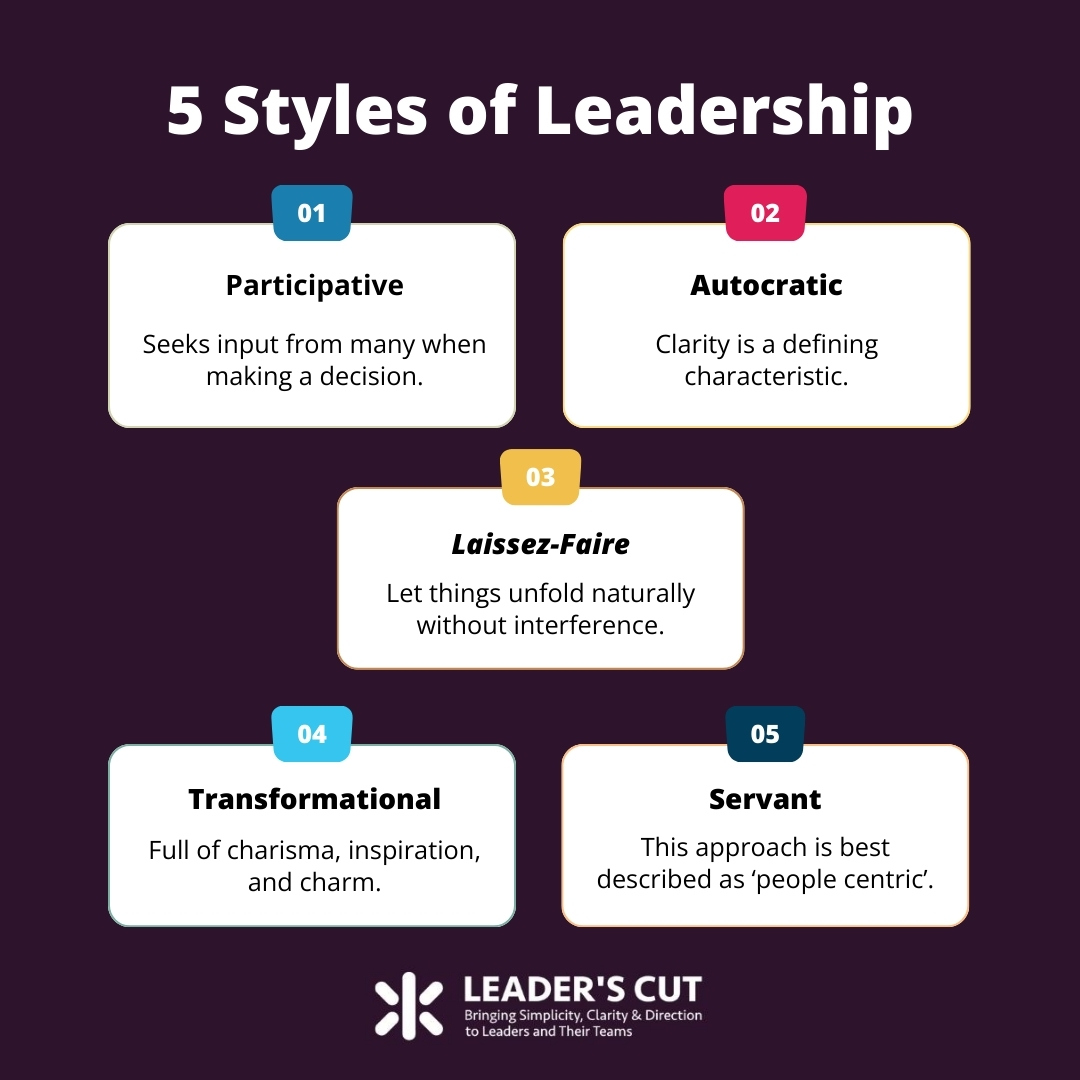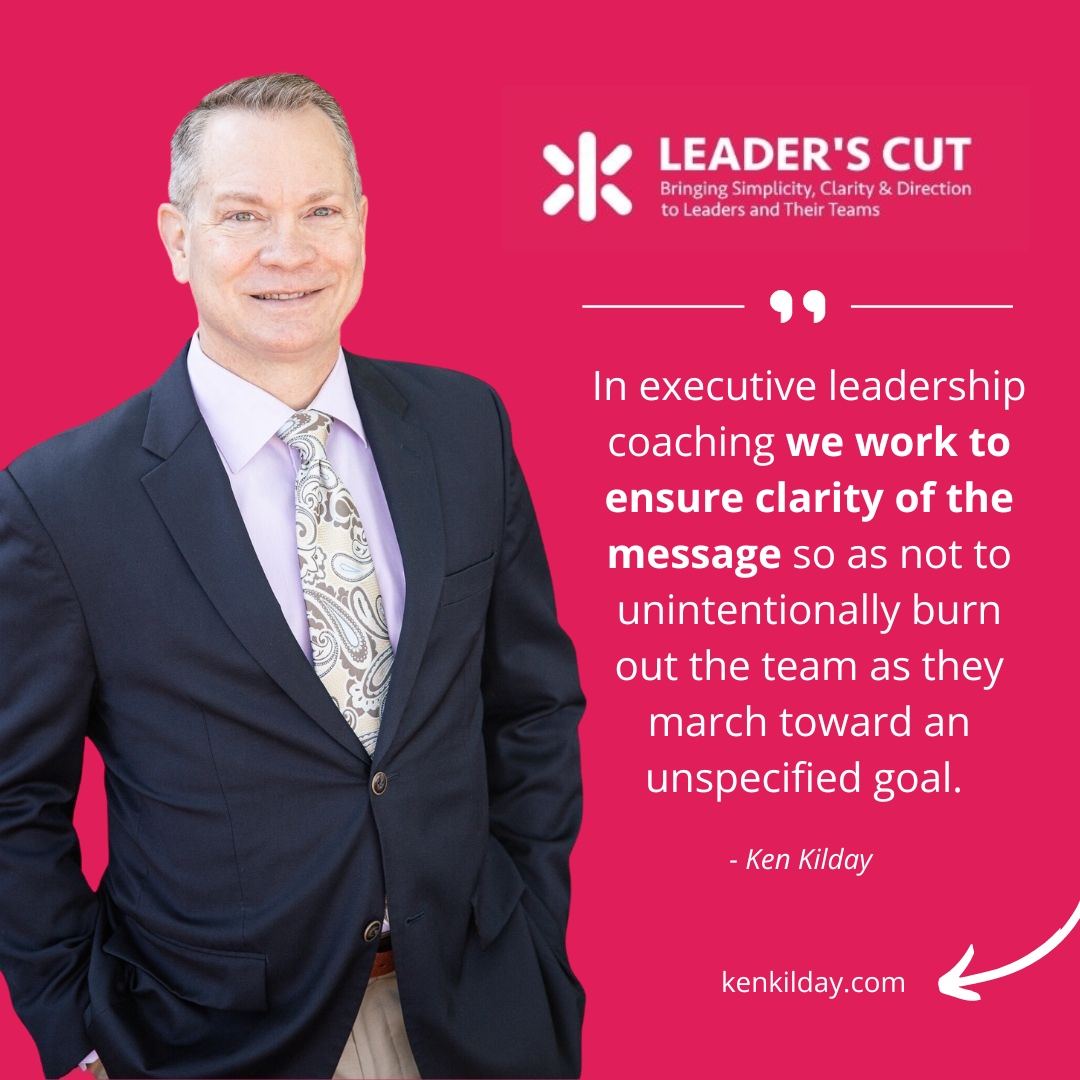Whether an entrepreneur, manager, or executive, there are several common leadership styles that people rely on according to the needs of the business, the economic cycle, and the goals they seek not to mention the needs of the people they are leading.
There are five leadership styles that executive coaching services will use as a framework for assessing what an organization is currently using as well as what they seek to achieve through business leadership coaching.

Leadership Style 1 – Participative
When a participative leader needs to make a decision they seek input from many. As a management style this is sometimes also referred to as consensus management.
Though this style can take some time to seek the opinions of others, it has the benefit of inclusion. Team members feel heard, are invested in the outcome, and feel that their voices matter thereby leading to strong morale. By using this management style, organizations often enjoy a loyal workforce.
The downside is that decisions take longer to make, which may create an opportunity cost.
Because of this, we use team effectiveness coaching to create a thorough, yet decisive way to collect the information, make decisions, and continue forward. This avoids falling into a trap of circular collection of information without a clear end point.
Leadership Style 2 – Autocratic
Clarity is a defining characteristic of the autocratic leadership style; without the need to seek input from others, they make decisions quickly and let everyone know what the plan is to get there.
Furthermore, the autocrat will be certain to explain the consequences of not achieving the clear expectations they’ve set.
The clear contrast between this management style and the participant leader is speed-of-decision. It has the benefit of moving quickly as new information becomes available. Every person has a very clear idea of what they are to do and how they are to execute.
Naturally the limitation that we work through with business and executive coaching is that this style does not take advantage of the strengths of all the other team members. It can be myopic in that way. There is an additional risk that morale may suffer and show up in high turnover.
Leadership Style 3 – Laissez-Faire
Many of us learned the phrase ‘Laissez-Faire’ the first time we took economics in school, though the sentiment means the same: to let things unfold naturally without interference.
Often seen in the more creative professions, this leader is laid back in their approach. They give high level guidelines trusting their team to come up with their own personal approach to success, while managing both their resources and themselves. Clearly this style depends heavily on an environment of trust.
When business and executive coaching is in place, we look for signs of balance between the creativity that comes from independent thinking and the dark side of missing deadlines or targets from lack of structure.
There are some simple structures business leaders can use, including having a non-creative member of the team own the responsibilities of deadlines, in order to both maximize creativity and deliver on-time and under budget.
Leadership Style 4 – Transformational
Charisma, inspiration, and charm are a few of the words used to describe the transformational leadership style. These characteristics allow this person to communicate with enthusiasm and motivate the team to achieve a moon goal.
Typically these leaders are known for also creating an open forum to talk through issues and make sure people are heard. This has the benefit of bringing out the best that each team member has to offer.
The reason this can be effective is that, as we say at Leader’s Cut, inspiration precedes perspiration.
An outgoing, enthusiastic, and inspiring leader creates the ‘transformation’ of tackling the biggest of challenges. Further, it has the benefit of creating strong morale and thus superior retention. Transformational leaders are frequently described as ‘getting it’, understanding, and caring.
In executive leadership coaching we work to ensure clarity of the message so as not to unintentionally burn out the team as they march toward an unspecified goal.

Leadership Styles 5 – Servant
Much has been written about the philosophy of servant leadership. Many more have adopted the terminology, though not always the practice.
This approach is best described as ‘people centric’. The leader places the needs of others ahead of their own need to be in the spotlight. In business and executive leadership, we see this style most frequently when the Mission is the focus of the organization.
Though you may be thinking that this is likely to show up in non-profits, which is correct, it also shows up when purpose, cause, and passion is clearly delineated.
As in participative leadership, decisions are made by soliciting feedback from many if not most of the team. As before, this is wonderful for inclusion and commitment, it can also slow down the process making the organization less responsive to rapid changes.
Servant leadership puts the spotlight on the employees, while management is usually working behind the scenes. Like participative leadership, decisions are made by a group instead of one person. Servant leadership toes the line between leader and servant. In a nutshell, they lead with the others in mind. You’ll find this approach at non-profit organizations, where the mission is key.
Learn Which Leadership Style Works Best for You
It is critical to successful leadership that you use a style that resonates with your natural genius as well as serves the needs of your organization. Executive coaches and leadership books rail against inauthentic leaders and this is no different. An autocratic in transformational clothing easily fails the sniff test at the first instance of micromanagement.
Therefore, take some time to think, journal, reflect, and decide the best fit for your own talents, the needs of your team, and that of the business.
If you want to experience coaching to know if it can take you, your team, and your business to new heights, then the Breakthrough Strategy Session is for you. The cost is 90 minutes of your time; at the end, you will know whether you would like to move forward.
I am an entrepreneur who has designed, built, launched, and rejuvenated successful businesses. I now take great joy in helping other businesses find success through Executive Business Coaching as the CEO+Founder of Leader’s Cut.




